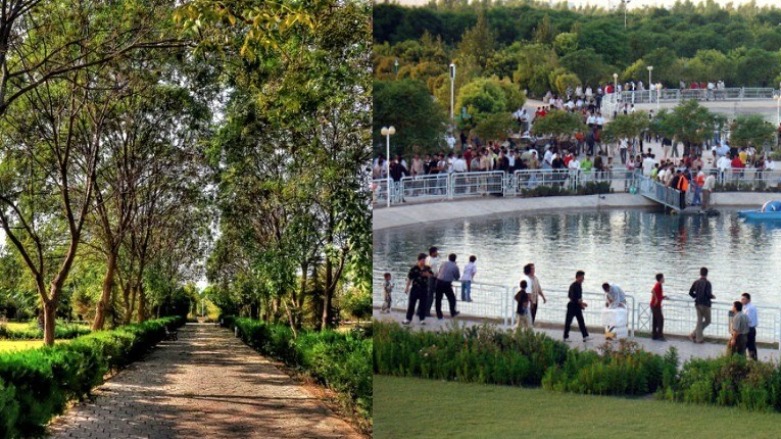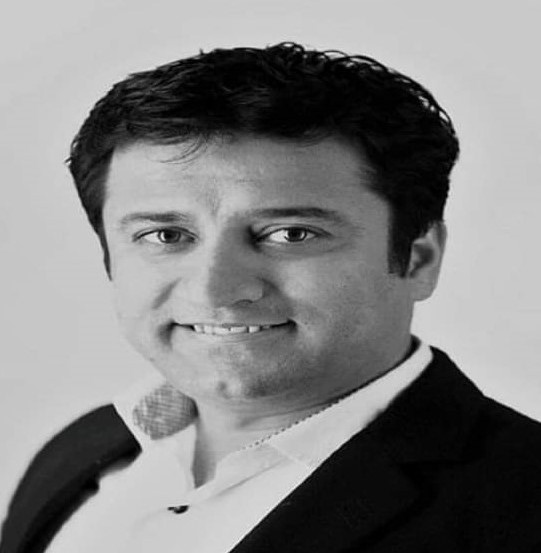Once a notorious military base, now Erbil’s landmark park

ERBIL (Kurdistan 24) – Erbil Park, officially known as Sami Abdulrehman Park, is more than a regular urban green space. One of the biggest parks in the Middle East, it welcomes five thousand visitors a day. On Fridays, the number can reach some 30 thousand.
In Saddam Hussein’s era, the park was the base for the Iraqi Army’s Fifth Corps and became the infamous site where Kurdish people, especially Peshmerga and those critical to Saddam’s regime, were tortured and killed.
“I have lost my closest friends in this military base,” says Sabah Faraj, a 70-year-old Peshmarga fighter. “It was a bad place once, but now the park pleases me and I feel that the souls of my friends are happy too.”
The Kurdistan Regional Government (KRG) started cleaning up the area in 1998 and the first phase of the park was complete in 2000. It opened for the public on March 14 of that year.
Situated in the west side of Erbil on 60 Meter Street, with the size of 200 hectors (.7 square miles), the park is often called the “lungs” of Erbil, lowering the temperature of its surrounding streets and buildings.
The park was named after Sami Abdulrehman, KRG’s former deputy premier who was killed in a suicide bombing on Feb. 1, 2004.
People from around the world visit the park, enjoying its rose garden, wild animals, birds, a health club with open-air swimming pool, a gym, a sauna, two lakes, and a public library.
“This park is the best I’ve ever seen,” said Abbas Ali, 26, from Mosul. “My children enjoy its playgrounds, its trees, and everything else that this park offers.”
For visitors unaware of its history, it may be just an entertaining park, but for people from Erbil it is more: it is a symbol of freedom. The park contains the Martyr’s Monument with an inscription, “Freedom is not free.”
“This park has a deep history,” Faraj says. “For Kurdish people it is a big victory, not just a park.”
The grounds contain roughly 400,000 trees, including 150,000 placed to make it more enjoyable for picnicking under their shade.
“You do not need to go far,” Ali says. “The trees have made this park a forest and it is close. It is in the heart of the city.”
Additionally, the park contains 18 gardens, four forests, several fountains and kiosks, a cinema, restaurants, a sport center, a stadium, an open theatre, a childrens’ playground, and a number of statues of Kurdish famous figures such as Mastura, a great Kurdish female poet.
Besides being a landmark park for its greenery and trees, well-kept grass, and dozens of different kinds of flowers, the park has an avenue where international events are held, such as trade fairs, book fairs, industrial fairs, and many others.
Two teams work tirelessly in two different shifts to keep the park clean.
Kurdistan 24 gave these cleaners and gardeners the award of “Hidden Solders” just two weeks ago for their dedication and hard work. Jamil Hussein, the park’s director, said that these workers are the backbone of the park.
They have only one demand, they said. “We ask visitors to help us keep the park clean.”
The park hosts other activities such as biking races, cultural events, sporting events, events for children, as well as art exhibitions. It is also the finish line of Erbil’s annual marathon which boasts over 20,000 runners.
Editing by John J. Catherine
